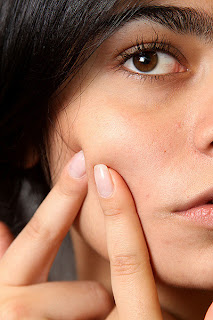What are glucosamine and chondroitin?
Glucosamine and chondroitin sulfate are compounds that are
thought to have a protective effect on the cartilage, as well as to help
manage osteoarthritis, particularly of the knee. Currently there are
still many controversies around the effectiveness glucosamine and
chondroitin sulfate in actually preventing the degeneration of joint
cartilage. In Europe, glucosamine is a prescription drug with a
standardized formula. In the United States and some parts of Asia,
glucosamine is sold over-the-counter as dietary supplements.
Both glucosamine and chondroitin sulfate are found in normal
joint cartilage and synovial fluid. Researchers proposed that glucosamine may
stimulate production of cartilage-building proteins. Glucosamine in supplements
is extracted from animal tissues such as crab, lobster or shellfish and
marketed as glucosamine sulfate or glucosamine hydrochloride. They are considered
to be equally effective, but the hydrochloride form is absorbed more easily by
the body and can be taken in lower dosage than glucosamine sulfate.
Chondroitin sulfate is part of a protein molecule that
maintains cartilage elasticity and is also thought to have an anti-inflammatory
effect. Chondroitin sulfate in supplements is extracted from animal cartilage
such as trachea or shark cartilage.
Do glucosamine and chondroitin really work for osteoarthritis?
In reality, some studies have found that either glucosamine
or chondroitin sulfate given together or separately may relieve osteoarthritis
pain with fewer side effects than conventional arthritis drugs. However, there
are also studies that have shown no benefit. Although currently positive
reports outnumbered negative ones, the negative ones have been larger and
better designed.
The largest clinical trial that studies the effect of
glucosamine and chodroitin sulfate is the Glucosamine/chondroitin Arthritis
Intervention Trial (GAIT), which is funded by the National Institutes of
Health. In 2006, the researchers reported that glucosamine and chondroitin,
alone or together, did not reduce osteoarthritis knee pain more effectively
than a placebo. Follow up reports from this study also failed to show any promising result.
However, despite this discouraging result many people who
take glucosamine and chondroitin sulfate supplements did report subjective
reduction in arthritis pain. There are preliminary reports that suggest
addition of vitamin C, bromelain, or manganese may enhance the effectiveness of
glucosamine and chondroitin sulfate. And because these supplements are thought
to have very few side effects, people keep taking them anyway.
Be wise if you decide to take glucosamine and chondroitin supplement.
 |
| Severe form of osteoarthritis may require surgery. |
So, what to do? If you decide to try glucosamine and
chondroitin sulfate supplements after all, give it three months time to
evaluate their efficacy. The typical initial dose is 1500 mg of glucosamine and
1200 of chondroitin daily for 6 to 8 weeks. If a response is obtained, the dose
can be reduced to 1000 mg of glucosamine and 800 of chondroitin or less. If you
feel there is no change in symptoms after three months, these supplements
should be discontinued.
If your symptoms are severe, you should stay on your usual
arthritis medications even while you are taking glucosamine and chondroitin. As
always, consult your physician before taking any form of supplements. Common
side effects include stomach upset, gas, soft stools, drowsiness, headache, racing
heart, and skin reactions. Patients with diabetes should pay extra caution
because glucosamine is an amino sugar that may affect blood sugar levels. Also,
because these supplements contain shellfish and other possible allergens, watch
out for allergy symptoms.













